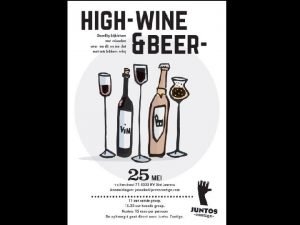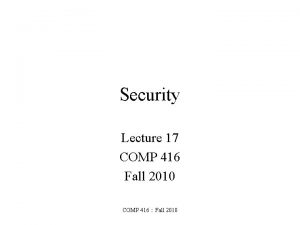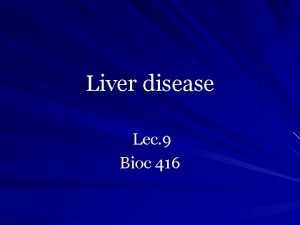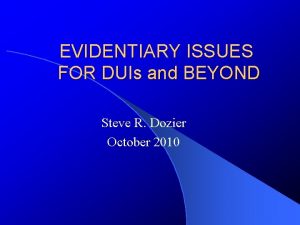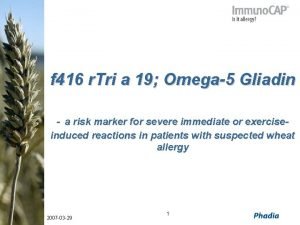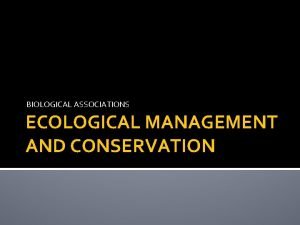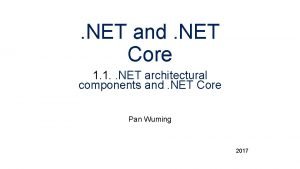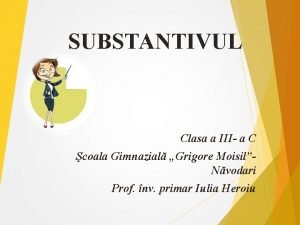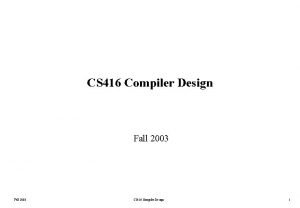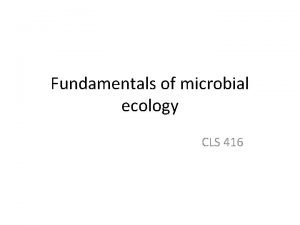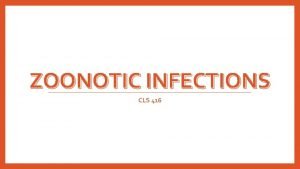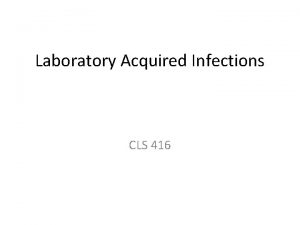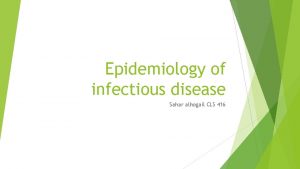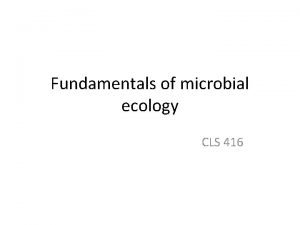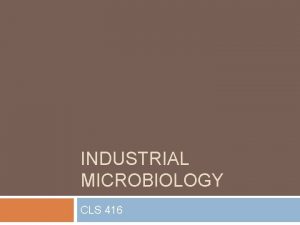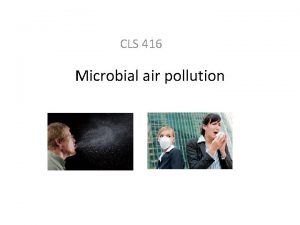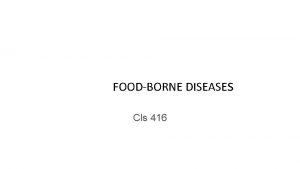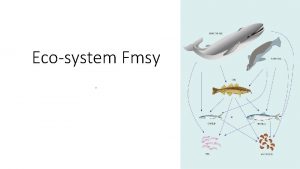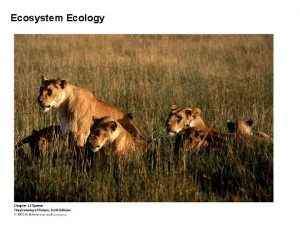ASSOCIATIONS IN AN ECOSYSTEM CLS 416 Types of















- Slides: 15

ASSOCIATIONS IN AN ECOSYSTEM CLS 416

Types of interactions Type of interaction § § § § Neutralism Commensalism Synergism Mutualism Competition Amensalism(antagonism) Parasitism Predation Effect on Populations Pop. A Pop. B No effect Beneficial Detrimental Beneficial No effect Beneficial Detrimental No effect Detrimental

Positive associations: 1 - Mutualism: q q An obligatory association between two organisms of different species where both populations benefit, and can not survive without each other. Examples: lichen is formed when fungi belonging to the Ascomycota or Basidiomycota live in close proximity with photosynthetic cyanobateria. The algae provide fungi with carbon and energy while the fungi supplies minerals and protection to the algae. Lactobacilli & vagina.

Types of Lichens (a) Crust like (b) Root like (c) Leaf like

Positive associations: 2 - Synergism: An association between two organisms of different species where both populations benefit from each other. Each can survive without the other. Examples: Cross-feeding, where metabolic end products of one pop. enhance the growth of the other pop. a-Ectomycorrhizas: A synergistic association between 10% of vascular trees, (as pine, eucalyptus, aok & rose trees) and fungi (Zygomycetes, Baasidiomycetes & Ascomycetes). Vascular plants provide food & protection for the fungus

Mycorrhizae

Synergism-----cont Fungi grow their mycelium into the rhizosphere that anchors the roots of trees and increase surface area to gain more water & minerals from the soil. (Specially poor nutrional, dry soil) Fungi secrete toxins that kills weeds & other crops that compete with the trees.

2 - Synergism: ----cont. b- Cross feeding between Lactobacillus arabinosus & Streptococcus fecalis, when grown together, will have an exagerated &faster growth rate. Strep. fecalis----> Phenylalanine(a. a) L. arabinosus----> folic acid

3 - Commensalism: A positive association between two organisms where one population benefits while the other is unaffected. Examples: a- Cyanobacteria & rice fields. (unaffected) b- S. aureus c- Yeasts d- humans (benefits) & & & H. influezae bacteria Entamoeba coli

Negative associations: 1 - Competition: One pop. Induces a reduction in the size of the other population, by competing with available nutrients, place or other physical environmental factors. (due to changes in the environment). Both pop. Are affected.

Negative associations---cont. 2 - Antagonism- Amensalism: One pop. greatly affects the environment of the other pop. mostly by secreting inhibitory agents. Examples: a- S. aureus & Aspergillus terreus. Staph. prevents formation of hyphae b- Pseudomonas sp. & Aspergillus terreus. Pigment prevents fungal sporulation.

Negative associations---cont. c- E. coli secreting Bacteriocins destroys other bacteria. d- Algae producing antibacterial fatty acids. e- Penicillium inhibiting the growth of bacteria.

Negative associations---cont. Predation: The bigger pop. (predator) Kills & consumes the smaller one(prey). Examples: a- Didinium feeds on Paramecium. b- Ameba feeds on bacteria.

Negative associations---cont. Predation: C- bigger animals consume smaller animals

Negative associations---cont. 4 - Parasitism: The smaller organism benefits & consumes the bigger one. Examples: a- Bacteriophage infects bacteria. b- Fungi feeding on algae. c- Microorganisms infecting man.


